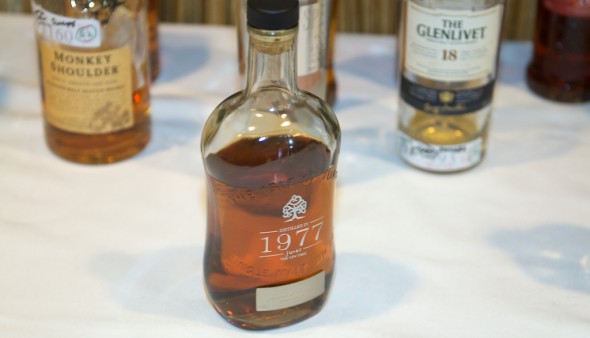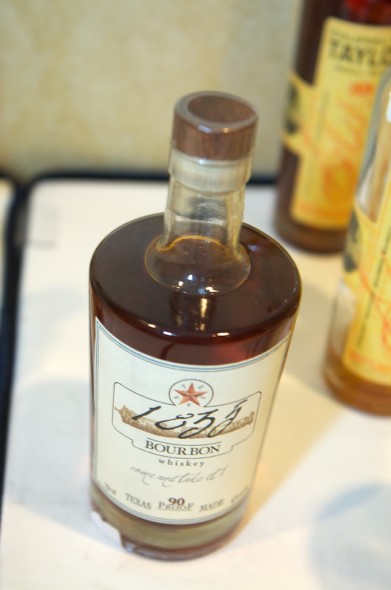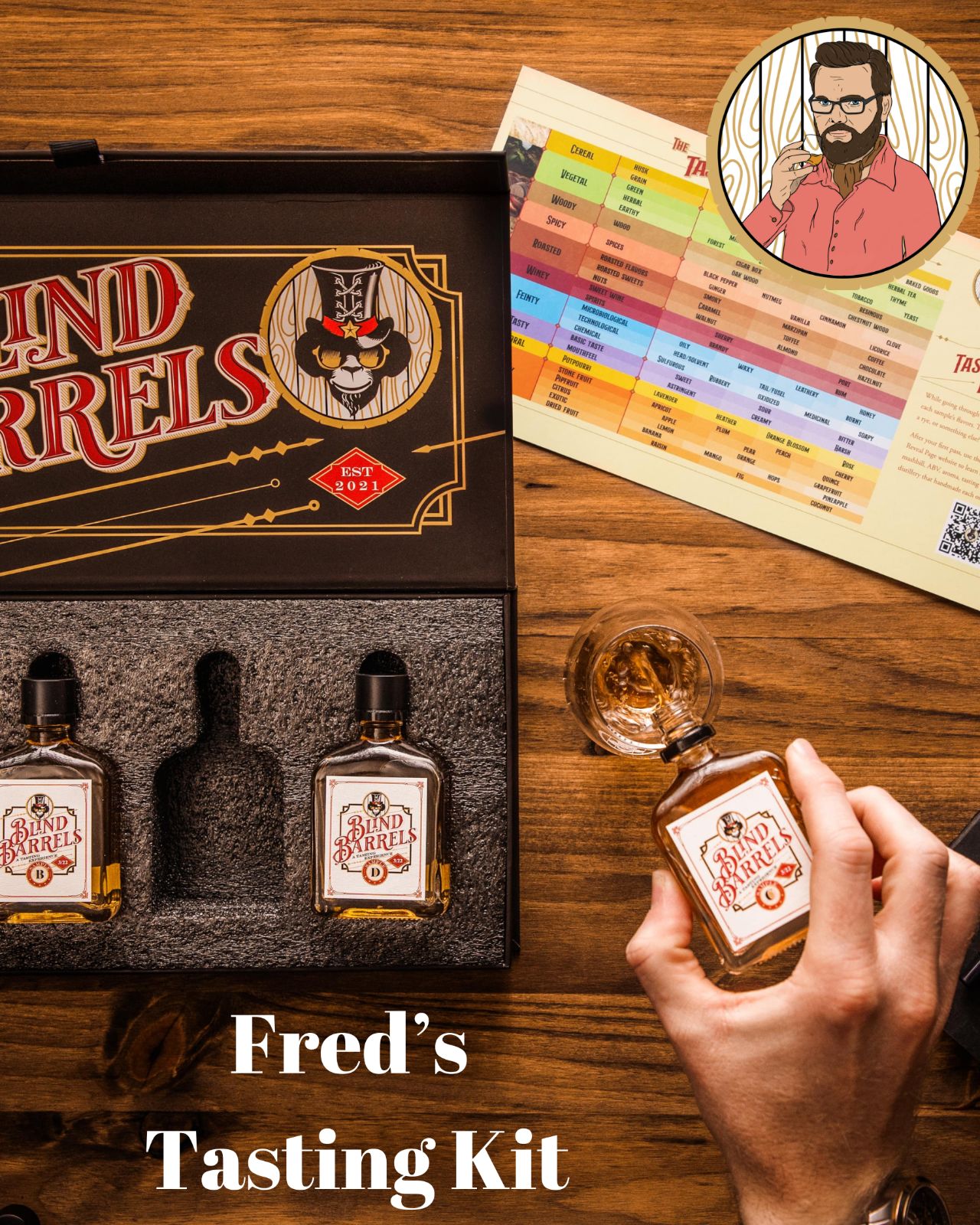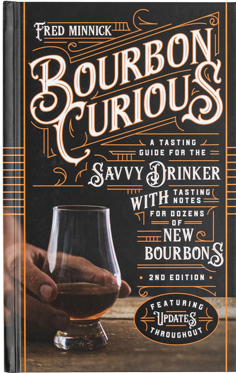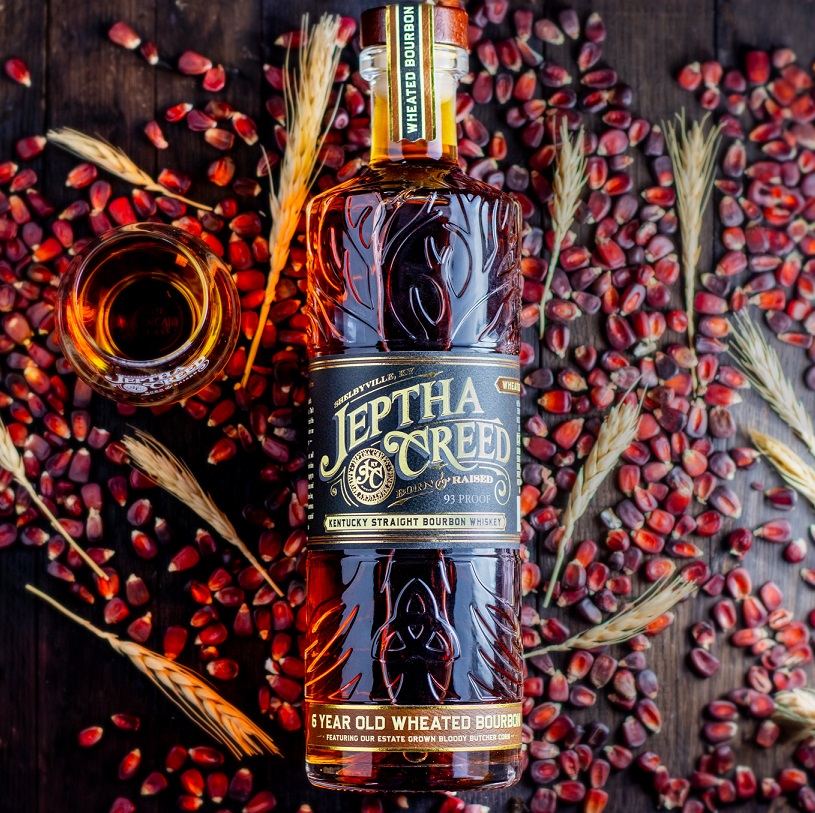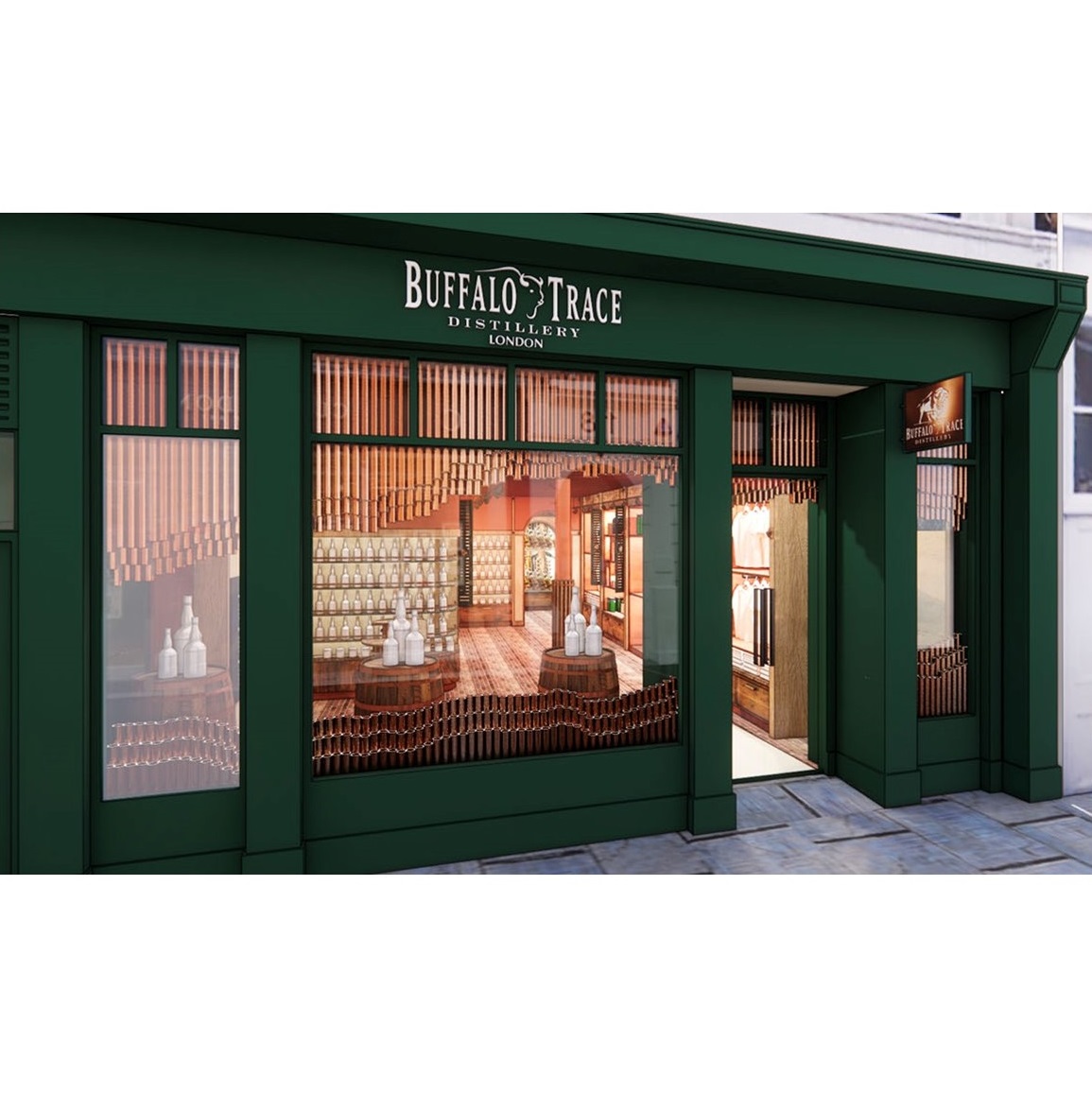The Inside Story to ‘Best Bourbon’ at the San Francisco World Spirits Competition
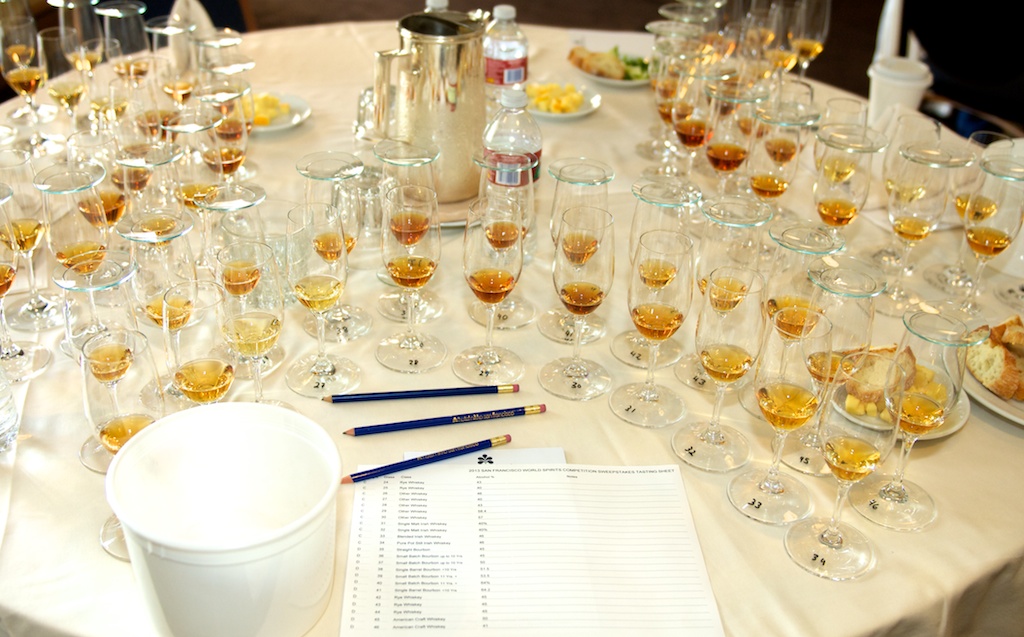
All lined up, shimmering in charred oak glory with uniquely rich noses, packing those patented smells of caramel and vanilla, nine bourbons awaited my lips. As with the other 275 of the 1,400 spirits I judged at the San Francisco World Spirits Competition, the whiskeys’ identities were secret. We were told proof and age range. Nothing more.
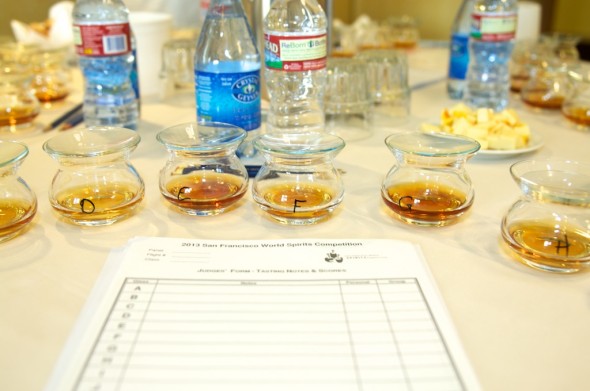
If there was a special nip in this flight, winning “Best Bourbon” or even a Gold could equal instant prestige. The San Francisco World Spirits Competition is the globe’s most-important spirit’s contest with 34 of the world’s finest palates blind tasting the libations, ranging from the pedestrian to the exclusive. In past years, this competition discovered St. Germain and Canton Ginger liqueurs before most stores carried them. Would this be the year a new bourbon was discovered?
Going into the competition, I wondered if I could detect a sweeter wheated bourbon vs. a spicier higher rye, or if my palate would be burned out after tasting a day’s worth of flavored vodka.
The Bourbon Flight
This “11-yr + Small Batch” bourbon flight was my ultimate test. Glasses “A” through “I” represented the category in every way, delivering the expected notes of praline, caramel and vanilla with each whiskey’s own respective complexity. Or lack thereof. In glass “C,” I wrote it packed cinnamon and was extremely well-structured giving little burn for a 116-proof bourbon. I penciled in my medal recommendation, a Gold, but I didn’t think it was Double Gold material. My panelists agreed; the whiskey earned a solid Gold.
Panels decide whether the liquor earns No Medal, Bronze, Silver, Gold and Double Gold. Three Golds and one Silver equals a Gold. If all vote Gold, it’s Double Gold, which are extremely hard to get.
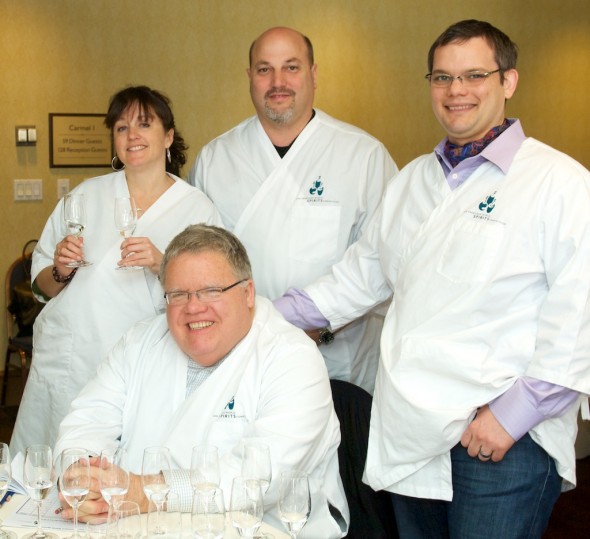
When I tasted “E,” my mouth rocked with caramel, vanilla, cigar box, French toast and a gorgeous structure that embodied the very essence of the wheated bourbon style. I would not let this whiskey get lost in the middle against the hugely, spicy and beautiful bourbons “F” through “I” that ranged in proof from 123.4 to 142.8 proof.
“This is a wheated bourbon,” I declared. “You can’t let it get lost in this tasting. It’s unique.”
My panel captain Senior Whisky Master Steve Beal cautioned me about such declarations. “You might be feel a little embarrassed when you find out it’s not what you said it is,” he said.
Despite two days of high proof liquors pounding my tongue and cheeks, I could not doubt my instincts; this was a wheated bourbon. If I couldn’t spot this, I didn’t deserve to be on this panel.
Of course, I started making assumptions, thinking this was W.L. Weller, Pappy Van Winkle or this new Jefferson’s Reserve wheated bourbon. I couldn’t be 100-percent certain on the proofs and ages of all these wheated bourbons that came to mind, so I was just guessing. Then again, sometimes, distillers send faux products to be judged and scored without judges learning the brand’s true identity. There’s also the chance E was a soon-to-be-released product. Did somebody find 50 barrels of wheated bourbons distilled at Stitzel Weller, the famous distillery (no longer in operation) known for making wheated bourbons?
I didn’t know. I just knew this bourbon stood out, layered in complexity with a velvety structure and never tickled the tongue despite its 107 high proof. This whiskey orchestrated layer after layer of richness and complexity that I simply had not tasted in any of the other flight’s bourbons. I marked it a Gold ++ and my fellow judge Ziggy Eschliman recommended a new “Platinum” level medal. Sommelier Steven Izzo was on the fence at a Silver + / Gold. He says Silver and the whiskey only becomes Gold. He says Gold, and it’s a Double Gold and our panel considers it for the Sweepstakes round that will compete for best in its “Small Batch bourbon” category.
I couldn’t let E lose. I just couldn’t. I said to my esteemed panelists: “This whiskey deserves more consideration, because it’s taking a huge risk making a lesser-made style of bourbon. This is wheated, and it should not be judged like the rest of these bourbons. You’re tasting spices of cinnamon and hints of pepper in these other bourbons, because they are high in rye content. If you judge ‘E’ on those same principles, of course, it does not warrant a Double Gold. But, if you take into consideration that this style is not meant to be spicy, you must look at it for what it is.”
Izzo retasted, looked at the glass and retasted again. “Okay, I’ll give it a Gold,” he said.
E still needed the captain’s approval to move on to the Sweepstakes for “Best Bourbon.” If he didn’t approve, E just earned Double Gold. Steven Beal looked at me with his Poker face, asking: “Fred, do you really think this style deserves to be recognized?”
I was staking my reputation on this bourbon, saying, “yes.”
“Okay, we’ll send it to Sweeps,” Beal said.
We sent F and G to Sweeps as well, rewarding those beautiful high-rye styles that were elegant in their own rights and without the piercing numbness of respective proofs of 123.4 and 128. Meanwhile, colleagues from other panels sent several other bourbons to Sweeps, leading to a Super Bourbon Taste Off to narrow down the “Small Batch Bourbon” field for the highest awards.
Unlike the previous round, the 10 judges did not discuss the whiskey. Sure, you could comment, but it was not a group decision. It was a vote, and a captain’s vote could not override the majority.
As I tasted in the Super Bourbon Round, I notated several didn’t taste like they were from Kentucky. I suspected a grain-forward nose was the Hudson Baby Bourbon, a New York whiskey, and another with a slight hint of dill on the finish was an Arkansas bourbon, Rock Town, I once featured in my American whiskey column. Of the 14 Double Golds considered for Sweeps, I suspected four were not from Kentucky. Could this be the year a craft distillery bourbon truly competed for Best Bourbon?
Each whiskey was amazing, but all were at 90 or higher proofs, indicating judges did not give “Best Bourbon” consideration to lower-proof bourbons. Hint, hint, distillers, stop making 80-proof whiskey!
E moved on to compete with the younger Small Batch Bourbons for Best Small Batch. If it won that, it would compete for “Best Bourbon.”
The Final Bourbon Tasting
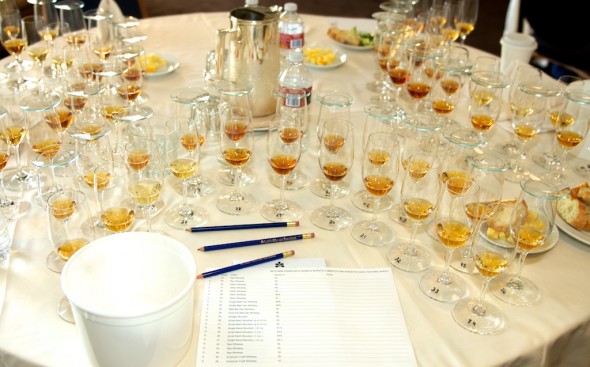
On the final day, the head judges, Anthony Dias Blue and Tony Abou-Ganim, sat at the front of the room and directed us when to taste and efficient volunteers counted our raise-your-hand votes. We would taste 72 products one more time and determine which were the very best.
E was now No. 39, and it faced the challenge it had before: It was stuck in the middle of big bold spicy bourbons. But, for me, this whiskey’s design, it’s elegance with a touch of feminine character stood out. It continued to wow me, trickling the tongue with swirls of new notes, especially an unexpected dried apricot explosion on the tip of my tongue.
Judges were scattered around the room, and nobody talked very loudly. My good friend Patricia Richards, head of mixology for Wynn Las Vegas, said the same things as me, emphasizing the 39’s “elegance.” When it came to vote, I won’t lie: I was nervous. I felt a connection with this whiskey deep in my bones.
It’s competition for best “Small Batch Bourbon” was “37,” a fatty ribeye steak compared to 39’s lighter filet. I had no guess to 37’s true identity, but the 100-proof bourbon deserved to be on this table. If 39 couldn’t win, 37 would stand a good chance to win it all.
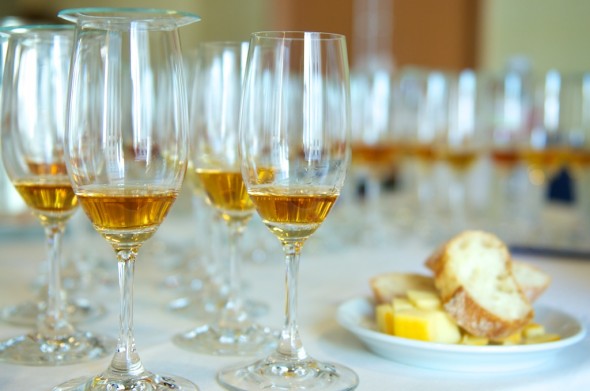
39 won in a landslide as Best Small Batch Bourbon and now faced the Best Single Barrel, 38, for “Best Bourbon.” The room realized we were analyzing two completely different styles. One was elegant and creamy; another spicy and punchy. 39 was Sugar Ray Leonard, quick on its feet with a killer jab; 38 was the 103-proof powerful Mike Tyson in its prime. This vote would come down to preference. Do you like layered, velvety and smooth or masculine and spicy?
Dias Blue asked for a raise of hands on 38, and 13 held their hands high. A few raised their hands for the “Best Straight Bourbon.” “For 39,” Dias Blue said, and three out of four judges at every table raised their hands.
It won.
39, formerly E, won Best Bourbon at the San Francisco World Spirits Competition. I bubbled over with pride, knowing my discussion at the panel level sent it to Sweeps. But, everybody tasted it, and 23 of 34 judges tapped it for Best Bourbon.
Now, it was up for Best Whiskey of Show, a tough feat for a bourbon. But, if any bourbon could stand up to a beautiful Scotch whisky, it was 39. Then, we all tasted the 35-year-old Scotch, a complex whisky that likely cost more than most used cars. It was simply sublime.
The Scotch won Best Whiskey, but 39 came in second beating out “Craft,” “Canadian,” “Irish” and “Other” whiskey winners, proving the judges respected this bourbon.
The Bourbon’s True Identity
So, what was this bourbon?
Well, I was convinced it was a Weller or Pappy Van Winkle product. Will this be the Weller 12-year-old 107 proof release? I pondered other wheated bourbons. Maybe Maker’s Mark decided to create a Small Batch 12-year-old or the new Larceny had a new extension? Or was this a completely unknown whiskey?
I hoped it wasn’t Pappy Van Winkle, a brand that seems to be in the press every day and can’t stay on the shelves long enough for people to enjoy it. The day I discovered E the Wall Street Journal dedicated several pages, error-filled mind you, to Pappy Van Winkle. If I just fought for Pappy Van Winkle to win Best Bourbon at the world’s most-prestigious spirits competition, I will have only added to the annoying Pappy mania that’s led to lotteries and distributors bullying on-premise operators to carry crap products just to have a bottle of Pappy. When liquor stores get a bottle of Pappy, there’s often a line winding around a city block.
The secret door is opened. And the Best Bourbon………………….
Pappy Van Winkle 15-year-old.
Shit, shit, shit, shit.
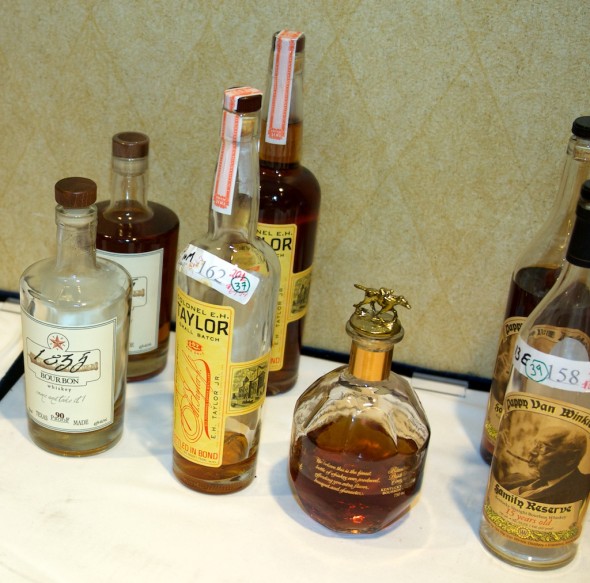
But, damn, Pappy Van Winkle 15-year-old, formerly 39 and E, sure was the best bourbon I tasted at the event. The judges agreed.
We also thought highly of three craft distillery bourbons, giving Double Golds to Arkansas’ Rock Town and New York’s Hudson bourbons as well as to a bourbon I’ve never seen—Texas-made “1835.” In fact, 1835 or “36” competed with Pappy for Best Small Batch. I would not be surprised if Arkansas, Texas or New York claimed “Best Bourbon” honors one day. Several other non-Kentucky bourbons faired Silver or better, indicating the craft distillers are winning over some of the best palates in the world.
As for all you sorry saps who will go looking for a bottle of the 2013 Best Bourbon, I’m sorry, but you likely won’t find Pappy Van Winkle. Now, every distributor in Africa, Australia, North America, Europe, Asia and South America will be calling the owners of Pappy Van Winkle demanding it for their rich clientele. The San Francisco World Spirits Competition has that kind of power. If Pappy was not on their radar before, it is now.
Sorry about that.
But, the bourbon is just that good.
